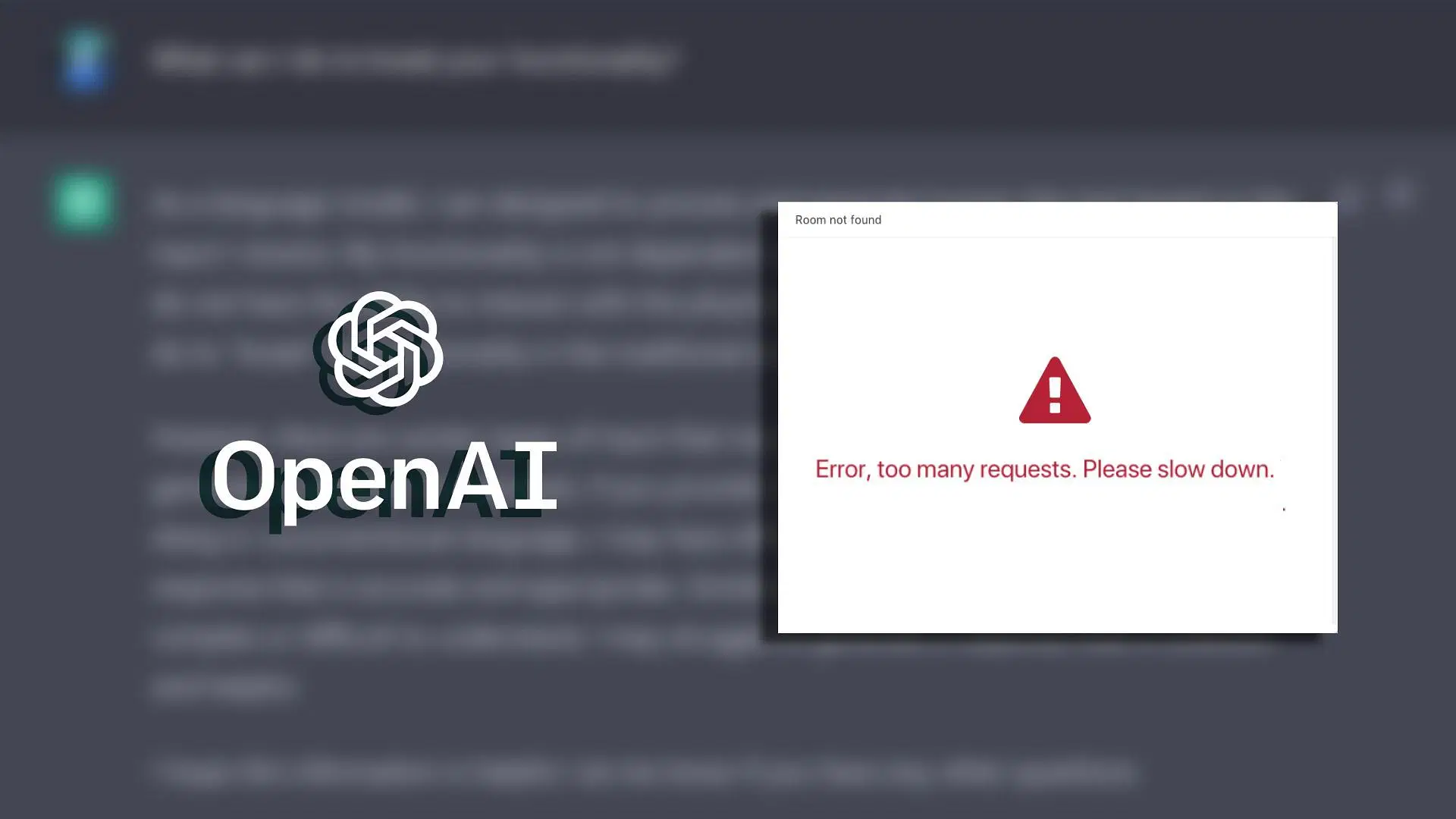Is chatgpt down – Is Kami down? It’s a frustrating question many users face. This happens more often than you might think, due to various factors ranging from planned maintenance to unexpected server issues. This guide will help you understand why these outages occur, how to troubleshoot common problems, and what alternatives you can use when the service is unavailable.
We’ll cover everything from identifying the source of the problem – is it a widespread outage, or just a problem on your end? – to exploring solutions like checking your internet connection, clearing your browser cache, or even trying alternative AI writing tools. We’ll also look at how to stay productive during downtime and what steps can be taken to prevent future issues.
Kami Service Interruptions
Service interruptions, while infrequent, are a reality for any online service. Understanding the causes, troubleshooting methods, and impact of these disruptions is crucial for both users and service providers. This section details potential causes, typical durations, troubleshooting steps, and a visual representation of the process.
Potential Causes of Temporary Service Disruptions
Several factors can contribute to temporary Kami service disruptions. These include planned maintenance, unexpected server issues (hardware failures, software bugs), network connectivity problems (both on the user’s end and within Kami’s infrastructure), and high traffic volumes exceeding capacity. External factors like DDoS attacks can also cause significant disruptions.
Typical Duration of Outages
The duration of outages varies greatly depending on the cause. Minor issues might be resolved within minutes, while more complex problems, such as major server failures or widespread network issues, could last for hours or even days. Kami aims to minimize downtime and provides updates as situations evolve.
Troubleshooting Common Connection Issues, Is chatgpt down
A step-by-step guide to resolving common connection problems:
- Check your internet connection: Ensure your internet is working by accessing other websites.
- Restart your browser and device: A simple restart often fixes temporary glitches.
- Clear your browser cache and cookies: Outdated data can interfere with functionality.
- Check Kami’s status page: Look for official announcements regarding service disruptions.
- Try a different browser or device: This helps isolate whether the issue is browser- or device-specific.
- Contact Kami support: If problems persist, reach out for assistance.
Troubleshooting Flowchart
A flowchart visually representing the troubleshooting process would begin with “Is Kami accessible?” If yes, the process ends. If no, it branches to “Check internet connection.” If the internet is down, the process ends with “Resolve internet issue.” If the internet is up, it branches to “Restart browser/device.” This continues through the steps listed above, ultimately leading to “Contact support” if all else fails.
Each step would have a yes/no decision point leading to the next step or a resolution.
Common Error Messages and Likely Causes
| Error Message | Likely Cause | Troubleshooting Steps | Status Code (Example) |
|---|---|---|---|
| “Service Unavailable” | High traffic, server maintenance, or a broader outage. | Check Kami’s status page, wait, try again later. | 503 |
| “Network Error” | Internet connectivity problems on the user’s end. | Check your internet connection, restart your router. | Various |
| “Timeout” | Slow internet connection, server overload, or a problem with Kami’s servers. | Check your internet speed, try again later. | Various |
| “Internal Server Error” | A problem on Kami’s server-side. | Wait and try again later, contact support if the issue persists. | 500 |
User-Reported Issues
Analyzing user-reported problems is crucial for identifying patterns and addressing systemic issues. This involves categorizing reports, assessing their impact, and prioritizing solutions.
Examples of User-Reported Problems
Users encountering the “down” message have reported various problems including inability to log in, slow response times, specific features not functioning, and error messages. These reports often include details about the time of the issue, the device used, and the specific steps taken before encountering the problem.
Patterns in User Reports
By analyzing user reports, patterns can emerge. For example, a high concentration of login failures during peak hours might indicate a server overload issue. Reports of specific feature failures could point to bugs in a particular code module. This analysis helps prioritize solutions and identify underlying systemic problems.
Categorization of User-Reported Issues
User reports can be categorized into several groups: login problems, response delays, specific feature failures (e.g., inability to upload files, generate certain types of text), and general unavailability. This structured approach allows for efficient tracking and analysis.
Impact on User Experience

Service interruptions negatively impact user experience, leading to frustration, loss of productivity, and potentially a decline in user satisfaction. The severity of the impact depends on the duration and nature of the disruption.
Prioritization of User-Reported Problems
Prioritization is based on severity and frequency. Critical issues affecting a large number of users require immediate attention, while less impactful issues can be addressed later. A severity matrix could be used, assigning scores based on impact and urgency.
Alternative Solutions & Workarounds
During service interruptions, alternative solutions and workarounds can maintain productivity. This section explores several options, comparing their features, limitations, and overall effectiveness.
List of Alternative Tools
Alternatives to Kami depend on the specific task. For text generation, options include other large language models, while for specific functionalities, specialized tools might be more suitable. A comparison table outlining features, limitations, and advantages/disadvantages would be beneficial.
Comparison of Alternatives
A table comparing different alternatives could include columns for features (text generation, translation, summarization, etc.), limitations (accuracy, cost, access restrictions), advantages (speed, ease of use, specific functionalities), and disadvantages (complexity, cost, limited functionality).
Workflow Disruption Management Strategies
Strategies include prioritizing critical tasks, delegating work, using offline tools, and communicating proactively with stakeholders about the disruption and expected recovery time.
Advantages and Disadvantages of Alternative Solutions

Each alternative has its own strengths and weaknesses. Some might be faster but less accurate, others might be more accurate but require a steeper learning curve. The optimal choice depends on the specific needs and priorities of the user.
Tips for Maintaining Productivity During Downtime
- Prioritize tasks.
- Focus on offline work.
- Communicate with colleagues and clients.
- Use alternative tools.
- Take a break to avoid frustration.
Monitoring and Prevention
Proactive monitoring and preventative measures are crucial for minimizing service disruptions. This involves implementing robust monitoring systems, redundancy, and preventative maintenance.
Methods for Monitoring Service Availability
Real-time monitoring tools track key performance indicators (KPIs) such as server load, response times, and error rates. Automated alerts notify administrators of potential issues, allowing for timely intervention.
Strategies for Preventing Future Disruptions
Strategies include regular software updates, proactive server maintenance, capacity planning to handle peak loads, and implementing robust security measures to prevent attacks.
Role of Redundancy and Failover Systems

Redundancy and failover systems ensure continued service even if one component fails. This involves having backup servers, network connections, and power supplies. If one system fails, the backup automatically takes over, minimizing downtime.
System for Tracking and Reporting Service Incidents
A system for logging and analyzing service incidents helps identify recurring problems and improve system reliability. This system should include details about the incident, its cause, resolution, and impact.
Preventative Maintenance Tasks
- Regular software updates.
- Scheduled server restarts.
- Database backups.
- Network security scans.
- Capacity planning and scaling.
Impact of Downtime: Is Chatgpt Down
Service interruptions have significant business implications, affecting user productivity, satisfaction, and ultimately, the bottom line. Understanding these impacts allows for effective mitigation strategies.
Potential Business Implications
Downtime can lead to lost revenue, damage to reputation, decreased customer satisfaction, and lost productivity for both users and the business. The financial impact can be substantial, particularly for businesses heavily reliant on the service.
Impact on User Productivity and Satisfaction
Users experience frustration, wasted time, and inability to complete tasks. This leads to decreased productivity and lower satisfaction, potentially causing users to switch to alternative services.
So, ChatGPT’s acting up again? If you’re frustrated and need some tech support, maybe try calling your provider. Finding the right number can be a pain, but if you’re a Telus customer, you might want to check out the telus loyalty phone number for assistance. They might be able to help you troubleshoot, or at least offer a distraction while you wait for ChatGPT to come back online.
Hopefully, that helps you deal with both problems!
Strategies for Mitigating Negative Effects
Strategies include proactive communication, providing alternative solutions, offering compensation for lost service, and investing in robust infrastructure to prevent future disruptions.
Visual Representation of Downtime Impact on KPIs
A text-based representation could show the impact on KPIs like user engagement (e.g., percentage decrease in active users), conversion rates (e.g., percentage decrease in successful transactions), and customer satisfaction (e.g., negative feedback increase). A simple table or chart showing these changes over time would effectively illustrate the impact.
So, ChatGPT’s acting up again? Yeah, it happens. While you’re waiting for it to come back online, maybe check out this cool tech: drone remote start – it’s pretty neat how you can control drones from afar. Anyway, hopefully, ChatGPT will be back up soon so you can get back to your work.
Communication Strategies During Service Disruptions
- Provide regular updates on the status of the outage.
- Explain the cause of the disruption (if possible).
- Estimate the time of restoration.
- Offer alternative solutions.
- Apologize for any inconvenience.
Conclusive Thoughts
Experiencing downtime with a crucial service like this can be disruptive, but understanding the potential causes and having a plan in place can minimize the impact. Remember to check for official announcements, troubleshoot basic connection issues, and explore alternative tools. By being proactive and prepared, you can navigate service interruptions smoothly and maintain your workflow.
So, ChatGPT’s acting up again? It’s frustrating when these AI tools go offline. Reminds me of that time I saw a news report about a drone crash – total tech failure, right? Anyway, back to ChatGPT – hopefully, it’s back online soon. Let’s see if it’s working now.
Questions Often Asked
How long do outages typically last?
Outages can range from a few minutes to several hours, depending on the cause. Major issues might take longer to resolve.
What should I do if I get a specific error message?
Check the troubleshooting steps related to that error message (see the detailed guide for a table of common errors and solutions).
Are there any alternative AI writing tools?
Yes, several other AI writing platforms exist, each with its own strengths and weaknesses. Researching these alternatives before you need them is a good proactive measure.
How can I report a problem?
Look for official support channels (e.g., a help center or social media) to report issues. Providing detailed information about the problem will help in its resolution.